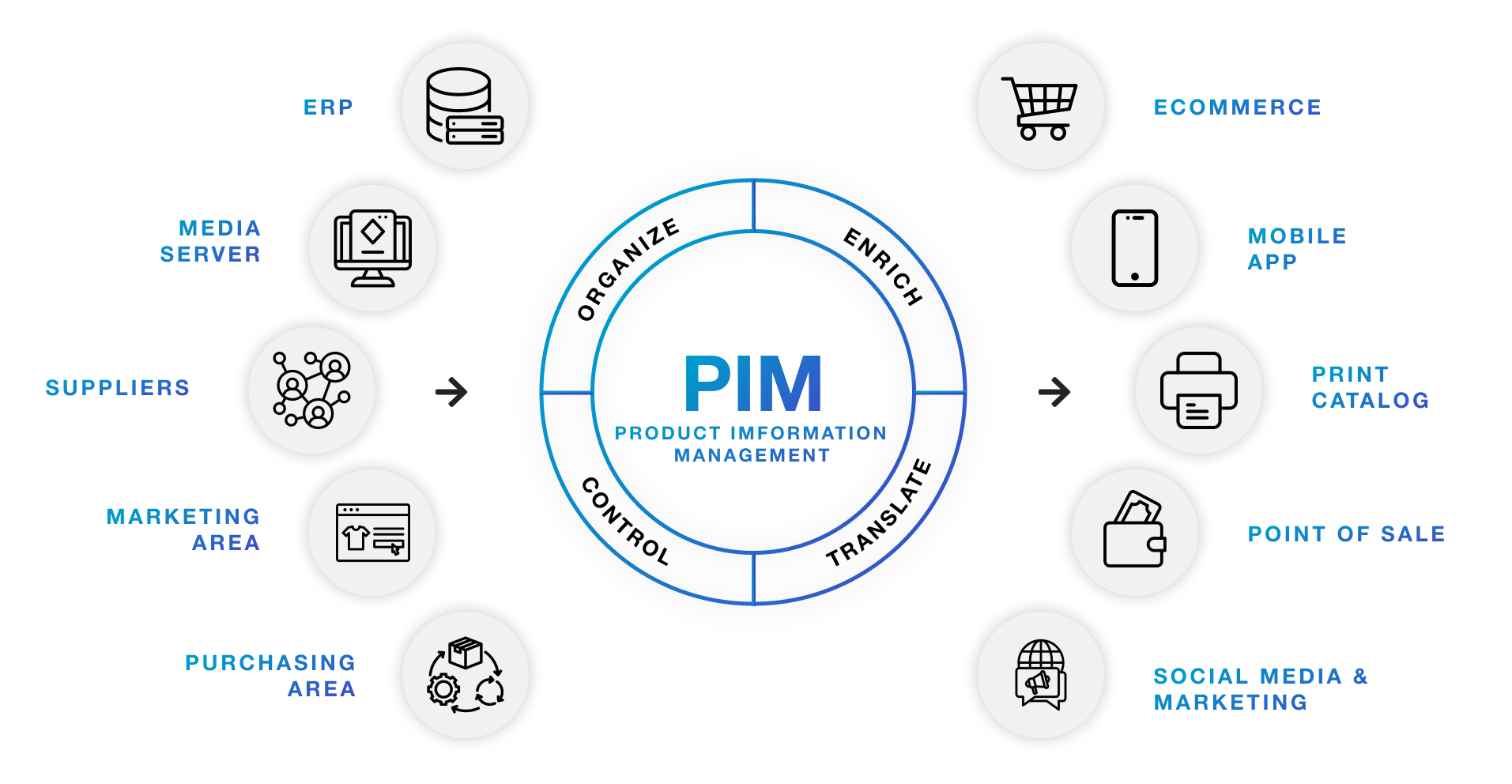CIO, Innovation Manager
Needs consistent, centralized data to support the digital transformation strategy; wants to decrease time-to-market and omnichannel data distribution.
PIM stands for Product Information Management
request a consultation


Product information can come from a variety of sources, from ERP to external suppliers but frequently from areas within the company itself such as the product office and marketing department. The data are all imported within the PIM, which then becomes the one and true repository.
The product or object we are going to manage is enriched by several attributes. To simplify the process, it is possible to duplicate products/objects and share elements between one and another.
These are all the characteristics that help shape the individual product, such as color, size, brand, or price.
Within the PIM, workflows can be set up to support the enrichment of product information, including translation and localization of content.
Cross-references are always automatically verified avoiding unpleasant inconveniences, for example in updating an item shared by several product sheets.
Through rule definition and customized flow management, organized and enriched product information is sent directly from the PIM to all communication channels, making content distribution immediate and consistent.
Needs consistent, centralized data to support the digital transformation strategy; wants to decrease time-to-market and omnichannel data distribution.
It needs a set of tools that are easy to deploy, scalable, performant, and compatible with major Cloud Computing services (Amazon AWS, Microsoft Azure, Google Cloud).
He wants to create personalized, engaging and satisfying digital and online shopping experiences through effective and efficient content delivery.
With a PIM, customized levels of access can be assigned to all parties involved in operations, with roles and permissions of different levels (read, edit or create data), allowing participation in the management of product information in a secure and calibrated manner.
Request a demo

Increased productivity and quality in workflows that require product content.
Aggregation of different content (images, text, video) to enhance product presentation.
Sending the updated information in real time to all communication channels.
Increased consistency and uniformity of product information in any channel, offline and online.
Improved information quality and reduced errors in product sheets.
Single source of enterprise information for product data with managed access permissions.
It arrives where email, folders and spreadsheets are no longer enough, ensuring a great omnichannel experience for the end customer.
To implement a PIM system in-house you can rely on our expertise: Extera is Gold Partner of Pimcore and Bronze Partner of Akeneo, two outstanding Product Information Management solutions. Let's get in touch to figure out together which solution is right for you.

Do you have a digital project you would like to talk to us about or simply want to get in touch? Drop us a line!